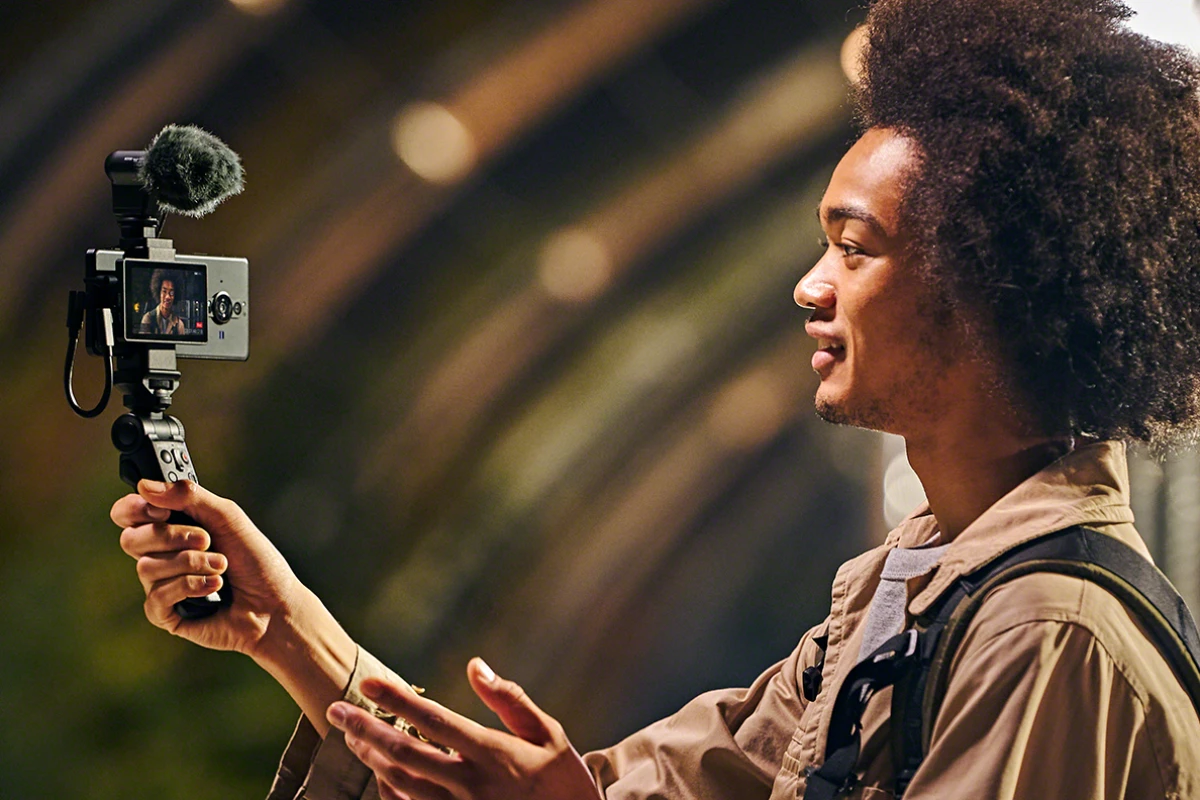As we regularly see, today's smartphone cameras are capable of snapping some incredible photos, even if their image sensors can't match those of DSLR and mirrorless cameras. Now Sony is bridging the gap by cramming a 1-inch Exmor sensor into the upcoming Xperia Pro-I handset.
Essentially the main camera in the triple-camera array makes use of a tweaked version of the 20-megapixel 1-inch stacked Exmor RS CMOS sensor from Sony's RX100 VII compact camera. But the company has sacrificed some of the available sensor area during its optimization for smartphone use, as the output is limited to 12-MP.
As with 2019's RX100 VII camera, the sensor works with a Bionz X processing engine and offers 315 phase-detection high-speed autofocus points covering 90 percent of the frame, up to 20 frames per second with autofocus and auto exposure, 12-bit RAW shooting capabilities, "outstanding low light performance" and 4K video at up to 120 fps (a smartphone first, according to Sony). There's real-time Eye AF and real-time subject tracking available for stills and video too, and 24-mm Zeiss Tessar dual-aperture optics feature up top.
Of course, the Pro-I is not the first smartphone we've seen employing a 1-inch-type image sensor. We got to grips with Panasonic's chunky CM1 in 2015, Sharp launched the Aquos R6 earlier this year, and Leica used that handset as its template for the Leitz Phone 1 in July. But Sony has included the big sensor in a triple camera array, and squeezed everything into a fairly slim handset that's just 8.9 mm thick.

The other two 12-MP cameras to the rear of the Pro-I shape up as a 16-mm F2.2 ultra-wide mated to a 1/2.5-inch Exmor RS image sensor and a 50-mm F2.4 telephoto with a 1/2.9-inch Exmor RS sensor. All three lenses here benefit from Zeiss T* anti-reflective coating, a 3D iToF sensor, and digital image stabilization – though the main and telephoto modules also boast optical image stabilization.
The phone features a dedicated shutter button to the side that rocks the same switch module as the RX100 cameras, and users can long-press this to launch a "Photography Pro" mode to access advanced camera settings.
Vloggers and mobile movie-makers can tap into creative settings via the new Videography Pro feature, while Cinematography Pro offers eight different color settings that use the Venice digital cinema camera as muse. There's a mono mic next to the main camera that can focus on clear speech capture, which is in addition to the handset's stereo microphones, and Sony has cooked in its audio separation tech to filter out wind noise from all audio recording.
Sony has also launched an external monitor for the smartphone, allowing vloggers to see themselves while using the main camera in selfie mode. It magnetically mounts to a metal holder attached to the handset, features a 3.5-inch 1,280 x 720 LCD display , a 3.5-mm microphone jack for external microphones, and is powered from the Pro-I's 4,500-mAh battery via USB-C. The Vlog Monitor accessory is available from December as an optional extra for US$200.

Elsewhere, the new Xperia handset features an eye-popping 4K HDR OLED 6.5-inch display with adjustable color, 120-Hz refresh rate and 240-Hz motion blur reduction. There's support for 100 percent of the DCI-P3 color gamut, and the ITU-R BT.2020 color space too – though not full support for the latter.
The phone has Snapdragon 888 5G processing brains supported by 12 GB of RAM and 512 GB of storage, with microSD expansion. It runs Android 11, comes with Wi-Fi 6, and Bluetooth 5.2 is also onboard with support for high-resolution wireless audio playback thanks to the LDAC and aptX HD codecs. Music lovers can take advantage of Sony's immersive 360 Reality Audio and 360 Spatial Audio technologies as well, and this handset comes with a 3.5-mm headphone jack.
Pre-orders for the unlocked Xperia Pro-I start on October 28 for $1,799.99, with availability pegged for December.
Product page: Xperia Pro-I








